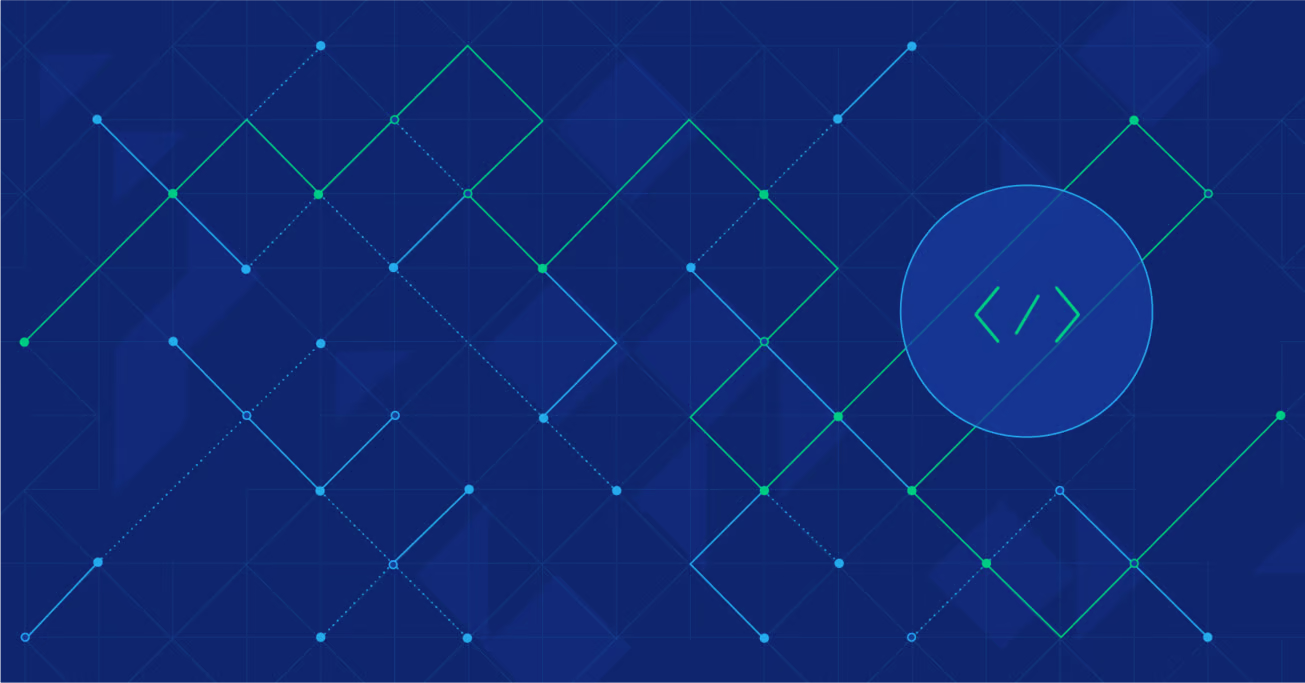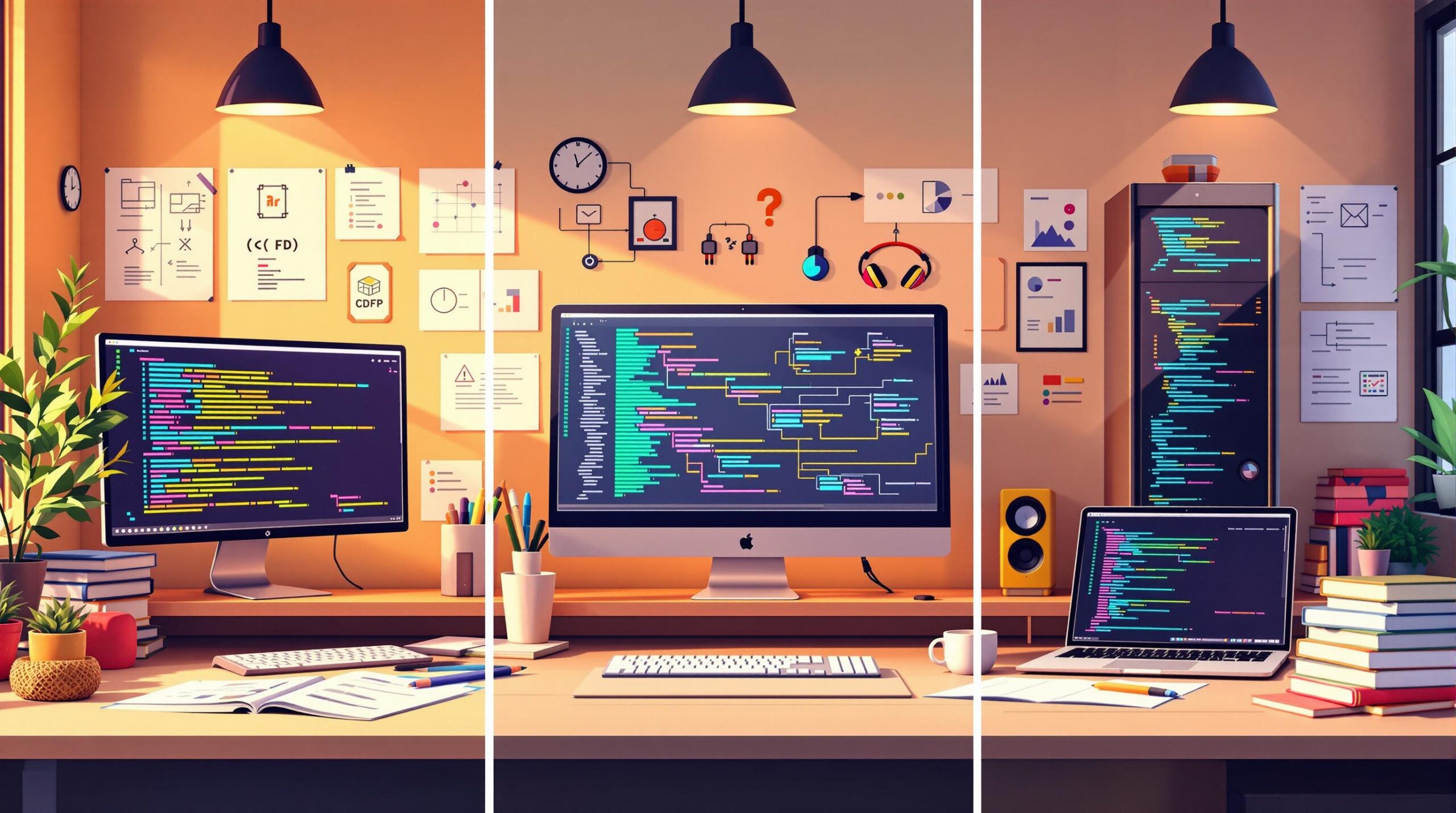Want to build a career in web development but unsure which path to choose? Here’s a quick breakdown to help you decide:
- Front-End Developers: Focus on creating user interfaces using tools like HTML, CSS, and JavaScript. They ensure websites are visually appealing and user-friendly.
- Back-End Developers: Work on server-side logic, databases, and APIs using languages like Python, Java, or Ruby to power websites behind the scenes.
- Full-Stack Developers: Combine front-end and back-end skills, managing entire projects from design to deployment.
Quick Comparison
| Role | Focus | Common Tools & Skills | Salary Range (India) |
|---|---|---|---|
| Front-End | User Interface & Design | HTML, CSS, JavaScript | INR 5-12 LPA |
| Back-End | Server & Database Logic | Python, Java, SQL | INR 6-15 LPA |
| Full-Stack | End-to-End Development | Mix of front-end & back-end | INR 8-16 LPA |
Tip: Choose front-end if you love design, back-end if you enjoy data and logic, or full-stack for versatility. Keep learning and stay updated with new technologies to grow in this fast-evolving field.
Front-end vs back-end: What’s the difference?
Differences Between Front-End, Back-End, and Full-Stack Roles
Understanding the unique responsibilities and skills of these roles helps aspiring developers align their career goals with industry demands.
Front-End Developers: Crafting the User Interface
Front-end developers focus on the parts of a website or app that users interact with directly. They use tools like HTML, CSS, and JavaScript to turn design ideas into functional, user-friendly interfaces. Their goal is to ensure websites look great, work smoothly, and are accessible across different devices and browsers.
Some of their main tasks include:
- Building and styling user interface components.
- Ensuring websites perform well and load quickly.
- Making sure designs work seamlessly on all browsers and devices.
They also prioritize user experience and follow web accessibility standards to ensure inclusivity.
Back-End Developers: Powering the Behind-the-Scenes Systems
Back-end developers handle the server-side logic that drives web applications. They work on databases, servers, and APIs to ensure everything runs efficiently. Using programming languages like Java, Python, and Ruby, they manage data flow and handle user requests.
Their responsibilities include:
- Designing and maintaining database structures.
- Implementing security protocols to protect data.
- Optimizing server performance for faster response times.
Back-end developers play a critical role in ensuring systems are secure, scalable, and reliable.
Full-Stack Developers: Bridging Front-End and Back-End Expertise
Full-stack developers are skilled in both front-end and back-end development, making them capable of managing entire projects. Their ability to work across the full development process makes them especially valuable for startups and smaller teams where flexibility is key.
| Role | Challenges | Focus Areas |
|---|---|---|
| Front-End | Accessibility, Browser compatibility | User Experience, Visual Design |
| Back-End | Security, Scalability | Data Management, Server Speed |
| Full-Stack | System Integration, Architecture | End-to-End Development, Teamwork |
In India, full-stack developers often earn between INR 8 LPA to 16 LPA [2][3]. Front-end and back-end developers typically earn slightly less, depending on their specialization and experience. The diverse skill set of full-stack developers often justifies their higher earning potential.
Knowing these distinctions can help you choose the right path and better understand how each role contributes to the development process.
Job Market and Salaries for Developer Roles
Industry Demand for Developer Roles
The software development field is expanding fast, with web developer jobs expected to grow by 23% by 2031. This surge is fueled by the increasing reliance on digital tools across industries like healthcare and finance [4]. Leading tech companies such as Google, Amazon, and Microsoft are on the lookout for full-stack developers who can manage a variety of projects and keep up with shifting technologies.
The rise of remote work has further opened up opportunities for developers, highlighting the importance of being self-sufficient and skilled across multiple areas. As the demand for talented developers rises, salaries and benefits are reflecting the need for specialized knowledge and diverse abilities.
Salary Comparison for Developer Roles
Skills in AI, machine learning, and cloud computing are now highly sought after, leading to higher salaries. The growing complexity of digital solutions, especially in industries like healthcare and finance, has contributed to this trend.
| Developer Role | United States (USD/year) | India (LPA) |
|---|---|---|
| Front-End | $73,950 | 5-12 |
| Back-End | $83,160 | 6-15 |
| Full-Stack | $114,140 | 8-16 |
Sectors like healthcare and finance offer attractive pay due to their increasing digital demands. Full-stack developers, in particular, are in high demand among startups and smaller teams, where maximizing resources is key. The inclusion of technologies like AI and machine learning has further boosted opportunities for full-stack professionals, underlining their ability to work across traditional development boundaries and meet evolving industry needs.
sbb-itb-f454395
How to Start a Career in Development
Finding the Right Training Program
Choosing the right training program is key to building a solid base in development. Look for programs that offer hands-on experience with the tools and technologies you’ll use in the field. For front-end development, this means focusing on HTML, CSS, and JavaScript. Back-end developers should gain expertise in server-side languages like Java or Python, while full-stack developers need to cover both, along with database management [4][5].
KodNest stands out by offering features like AI-driven mentorship, mock interviews, and hackathons, all designed to align with industry needs.
| Program Feature | What It Offers |
|---|---|
| Hands-on Projects | Practical experience with real applications |
| AI-driven Mentorship | Tailored guidance for personalized learning |
| Mock Interviews | Industry-level interview preparation |
| Hackathons | Problem-solving in real-world scenarios |
| Job Placement Support | Career advice and job opportunities |
After mastering the basics, it’s important to keep learning and refining your skills to stay relevant in this fast-changing field.
Staying Updated with New Technologies
Completing your initial training is just the start. To succeed in the long run, you need to stay current with the latest technologies. The tech world evolves quickly, and ongoing learning is essential for keeping your career on track [4][5].
- Join Developer Communities: Platforms like Stack Overflow and GitHub are great for learning about new practices and connecting with other developers.
- Work on Projects: Building real-world applications not only strengthens your skills but also provides a portfolio to showcase to potential employers.
- Follow Industry Leaders: Keep up with updates and trends by following influential developers and tech companies. Their insights often highlight what’s next in the field.
- Use Learning Platforms: Take advantage of resources that offer continuous education. KodNest, for instance, provides ongoing learning tools and mentorship to help developers stay ahead in the industry [1].
Conclusion and Next Steps
Overview of Developer Roles and Career Paths
Front-end developers handle user interfaces, back-end developers focus on server-side logic and databases, and full-stack developers cover projects end-to-end with a mix of both skill sets. Each role opens doors to exciting opportunities in the tech world [4][5].
| Developer Role | Core Skills | Career Potential |
|---|---|---|
| Front-End | HTML, CSS, JavaScript | High demand for UI specialists |
| Back-End | Java, Python, SQL | Strong need for database and logic experts |
| Full-Stack | Combines front-end and back-end | Often leads to top-tier salaries |
How to Start Your Journey in Development
Begin by identifying what excites you most in development – whether it’s designing user interfaces, building robust systems, or doing both. Focus on learning essential tools and technologies, work on practical projects, and create a portfolio to highlight your expertise. Platforms like KodNest offer structured training and placement assistance to help bridge the gap between learning and landing a job.
Key steps to kick off your career:
- Find Your Focus: Choose a path that aligns with your interests and strengths.
- Learn the Basics: Build a strong foundation in essential technologies before diving into advanced tools.
- Hands-On Practice: Work on real-world projects to sharpen your skills and create a portfolio.
The tech industry evolves quickly, so staying updated and continuously learning is crucial. Specializing in front-end, back-end, or full-stack development can set you on a solid path, but blending technical expertise with a willingness to learn ensures long-term success. A strong portfolio, staying current with trends, and networking within the developer community will help you thrive [4][5][6].
Your first choice of specialization is just the start. As you grow, you’ll have chances to broaden your skills and adapt to new challenges, helping you stay relevant and advance your career in this ever-changing field.
FAQs
Here are answers to some common questions about developer roles to help guide your career decisions.
What is the difference between front end, back end, and full stack?
Front-end developers focus on creating user-facing interfaces, back-end developers work on server-side systems, and full-stack developers handle both. Each role involves different tools and skills to build functional web applications.
| Developer Type | Main Focus | Common Tools |
|---|---|---|
| Front-End | User Interface | HTML, CSS, JavaScript |
| Back-End | Server Logic | Python, Java, SQL |
| Full-Stack | Both Front and Back End | A mix of front-end and back-end tools |
Understanding these differences can help you decide which path aligns with your interests and goals.
Which is better: front-end, back-end, or full-stack development?
The "better" option depends on your personal interests and career objectives. Front-end development is often more accessible for beginners, as it focuses on visual elements and user experience. Back-end development suits those who enjoy tackling complex systems and logic. Full-stack development provides flexibility and a broader range of skills but requires mastering both areas. Each role has its strengths, so the right choice depends on what excites you most.
Do full-stack developers earn more than front-end developers?
Salaries vary based on factors like location, experience, and the specific role. Generally, back-end developers tend to earn the most, followed by full-stack and then front-end developers. Full-stack developers are often in high demand because they can handle various aspects of development [1][2].
"All three roles offer strong career prospects, but full-stack developers may have an edge in terms of job security and growth opportunities due to their versatility and ability to adapt to changing project requirements." [1][2]
Regardless of the role you choose, focusing on building a solid skill set and keeping up with industry trends will set you up for long-term success in development.





